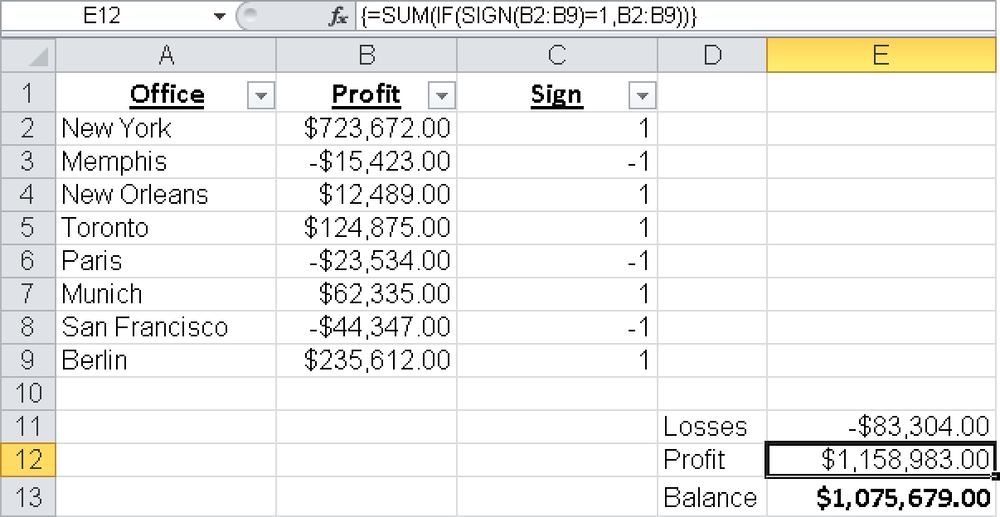Definition. This function returns the sign of a number. SIGN() returns the following values:
1if the number is positive0if the number is 0–1if the number is negative
Argument
number (required) Any real number
Background. Numbers greater than zero are positive numbers and have the plus sign (+). Numbers less than zero are negative and have a minus sign (–). The plus sign can be omitted. The number 0 is neither positive nor negative.
With the SIGN() function, you can filter values based on their sign.
Example. Assume that you want to filter the subsidiaries that generate negative revenues in a sales list. First, you display the sum of the losses (see Figure 16-25).
You enter the SIGN() function in column C with a reference to the revenue (see Figure 16-26). Now you can filter all revenues with a minus sign.
To display the sum of the losses, you enter the following formula in E11:
{=SUM(IF(SIGN(B2:B9)=-1,B2:B9))}To display the revenues, you enter the following formula:
{=SUM(IF(SIGN(B2:B9)=1,B2:B9))}You have to enter both formulas as array formulas, so you must press Ctrl+Shift+Enter after you enter the formula.

